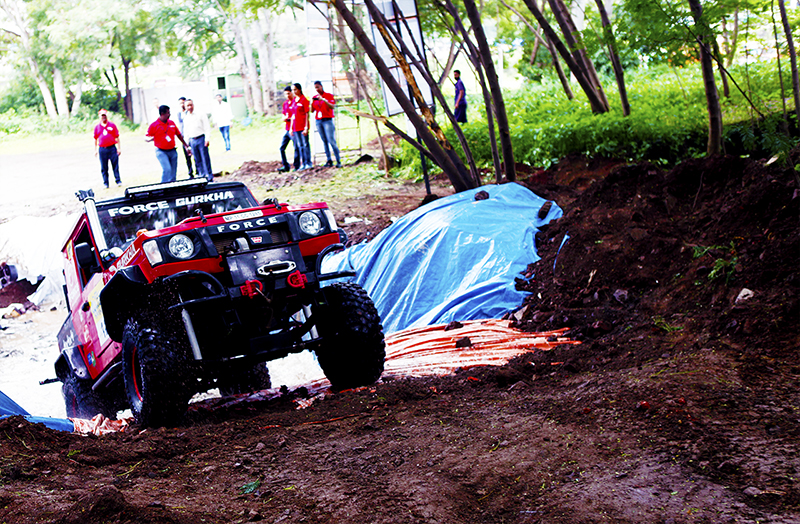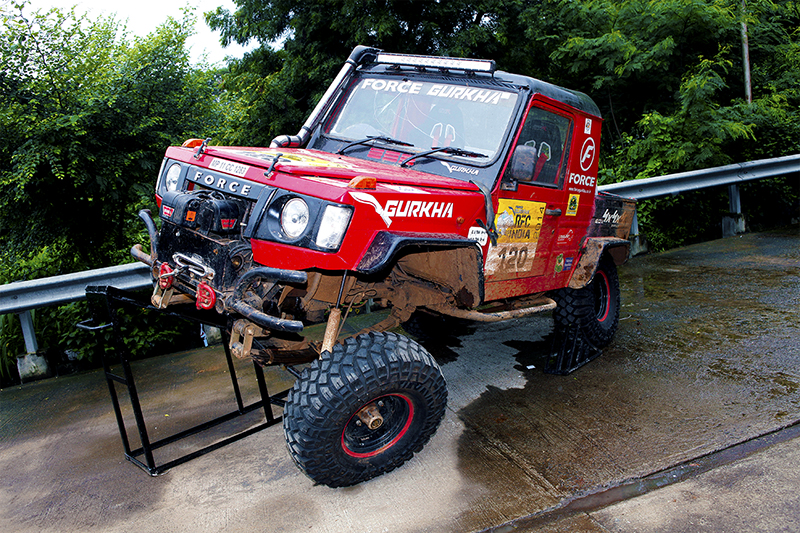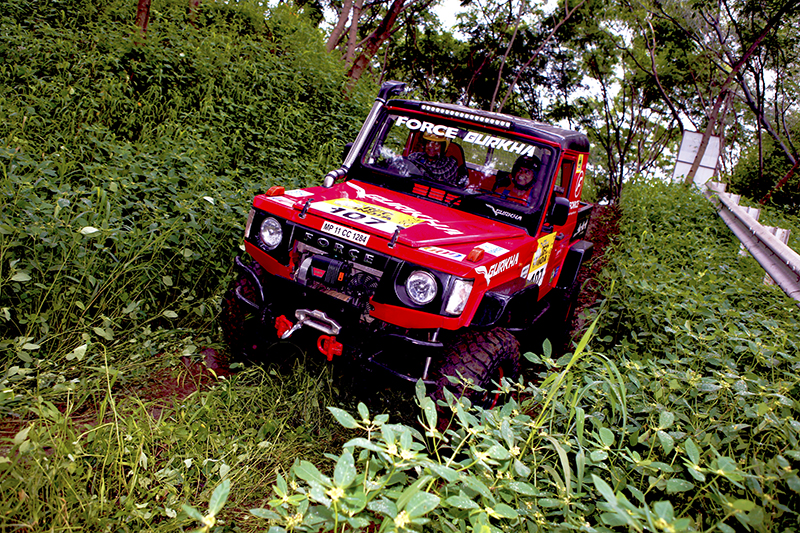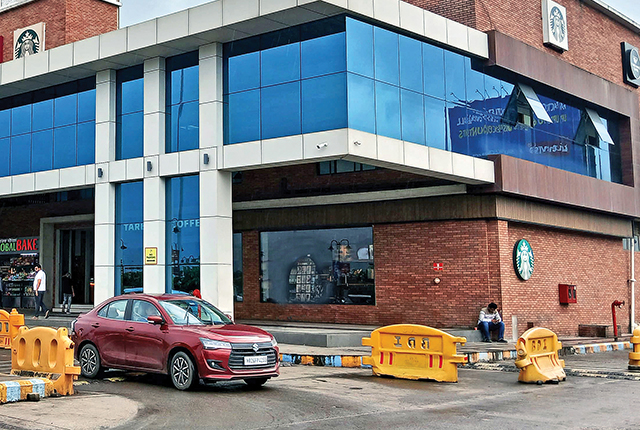
After such extremities we drove through an easy section, which was covered with tall grass and shrubbery. There were a few undulations on the way that seemed more like giant speed-breakers to me but were small bumps for the RFC Gurkha. After a good 10 minutes we got out of the course and now it was my turn in the driver’s seat.
The moment I started driving, I was guided by a normal Gurkha that led me to an articulation testing area with giant holes in the ground, which looked as if they were the parents of the potholes that we encounter all the time on Indian roads. At first I was nervous about getting stuck, but a little guidance from Sanjiv and clever use of the throttle and I simply glided through this area without getting the Gurkha stuck anywhere. While tackling this section I also realised how easy the Gurkha was to steer. The fully hydraulic steering, borrowed from the Force Balwan tractor, was smooth like butter and effortless to operate. I never felt that I was driving something humongous. It is simply a fabulous steering system for a vehicle like this.
The best bit about the RFC Gurkha was its engine. It is a modified version of the 2.2-litre CRDI, the same unit used in the Force One SUV, which has a lot of turning force that pushes the Gurkha through any obstacle without breaking into a sweat. The 4X4 system is also pretty amazing and provides the best possible grip even in slush and water. I am not an off-roading expert but the RFC Gurkha made me feel as if I could conquer any terrain I wanted to with utmost ease. I felt so because the team that put together this machine has done a fabulous job of combining the best components from the company’s entire line-up to make the Gurkha that won one of the toughest extreme off-roading challenges in the world. You can’t really buy the RFC Gurkha, but you can always consider buying the normal Gurkha, which is one of the best off-roading machines available in the country today.






















Leave a Reply